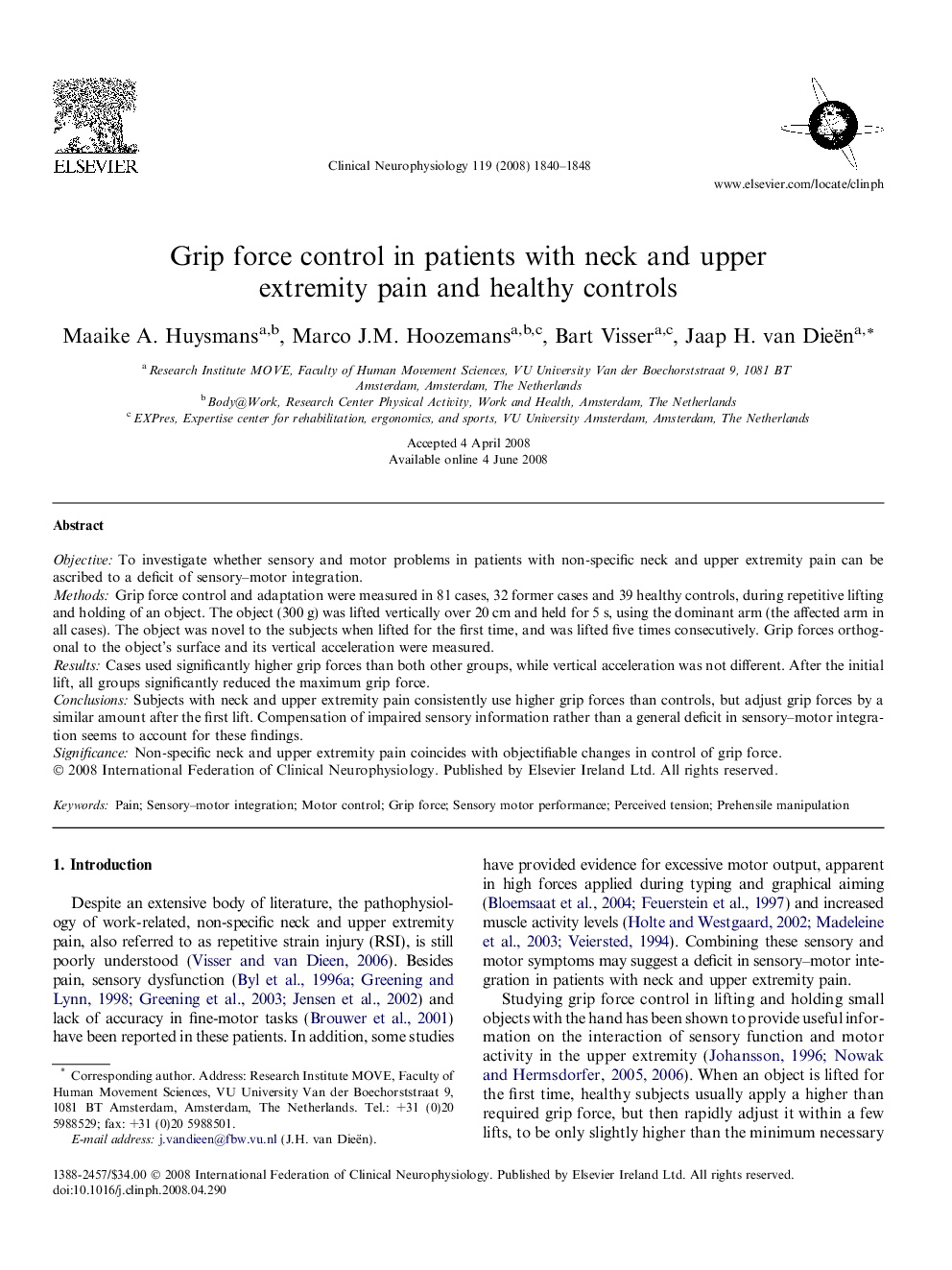| Article ID | Journal | Published Year | Pages | File Type |
|---|---|---|---|---|
| 3047753 | Clinical Neurophysiology | 2008 | 9 Pages |
ObjectiveTo investigate whether sensory and motor problems in patients with non-specific neck and upper extremity pain can be ascribed to a deficit of sensory–motor integration.MethodsGrip force control and adaptation were measured in 81 cases, 32 former cases and 39 healthy controls, during repetitive lifting and holding of an object. The object (300 g) was lifted vertically over 20 cm and held for 5 s, using the dominant arm (the affected arm in all cases). The object was novel to the subjects when lifted for the first time, and was lifted five times consecutively. Grip forces orthogonal to the object’s surface and its vertical acceleration were measured.ResultsCases used significantly higher grip forces than both other groups, while vertical acceleration was not different. After the initial lift, all groups significantly reduced the maximum grip force.ConclusionsSubjects with neck and upper extremity pain consistently use higher grip forces than controls, but adjust grip forces by a similar amount after the first lift. Compensation of impaired sensory information rather than a general deficit in sensory–motor integration seems to account for these findings.SignificanceNon-specific neck and upper extremity pain coincides with objectifiable changes in control of grip force.
